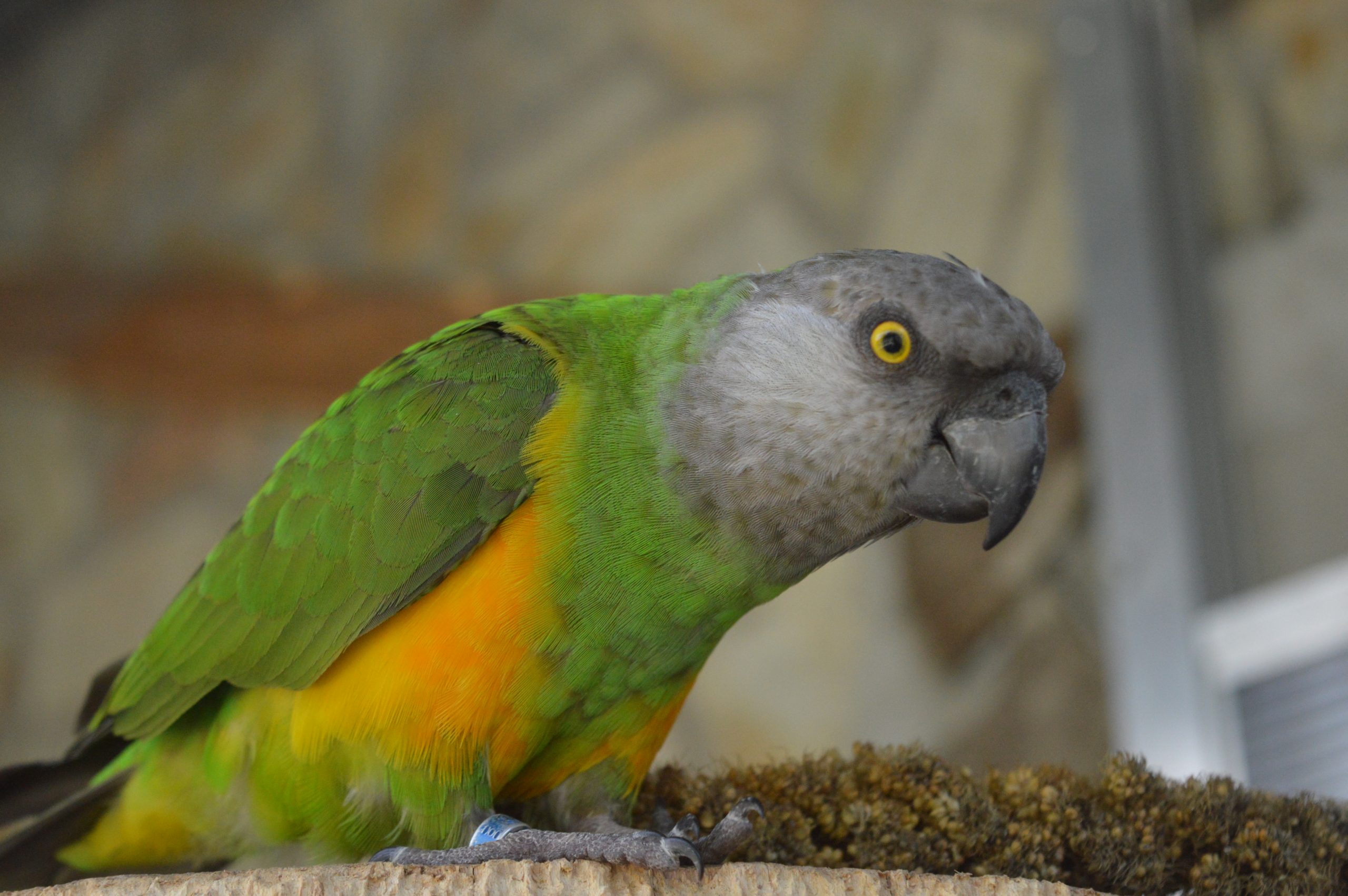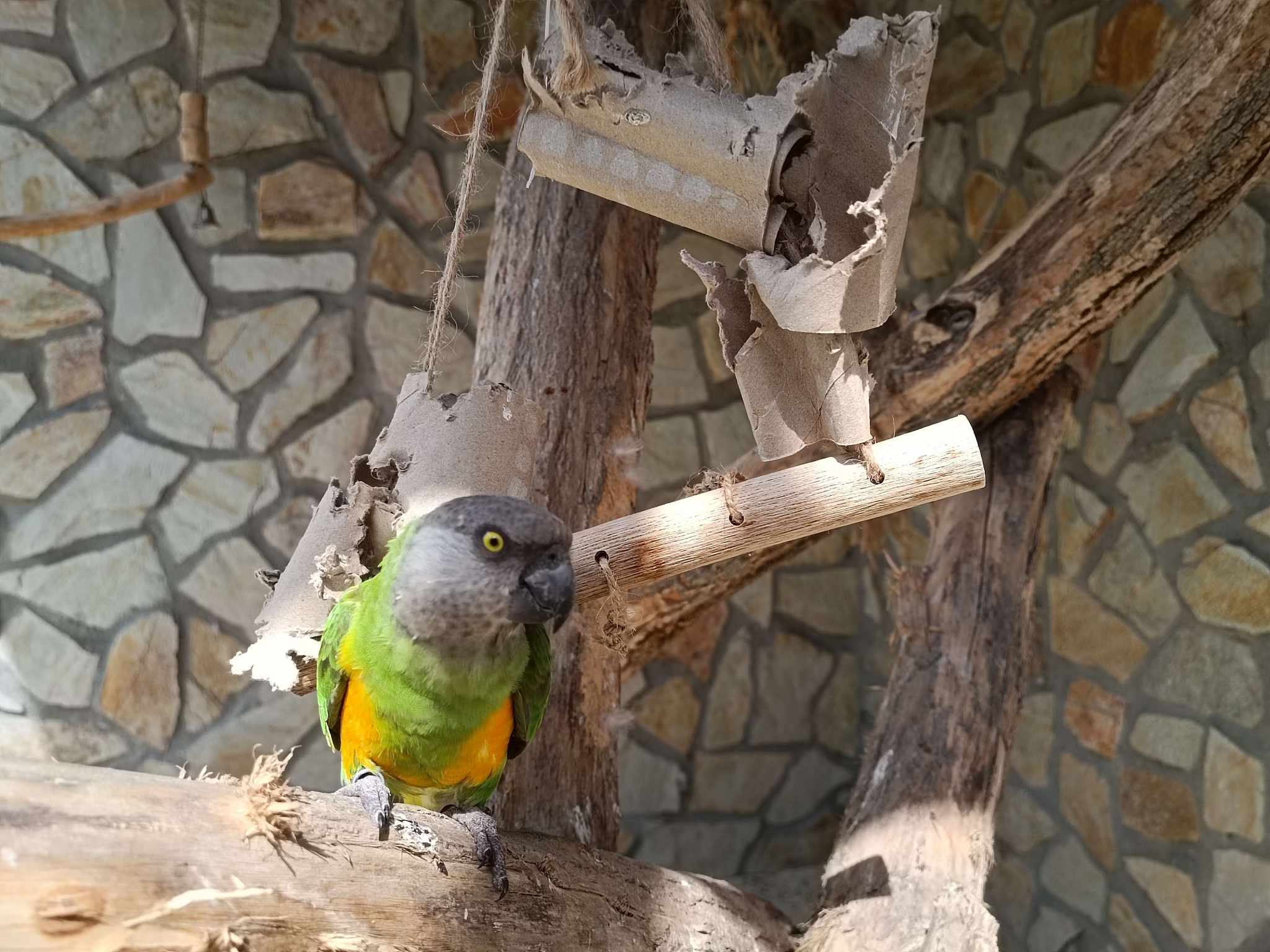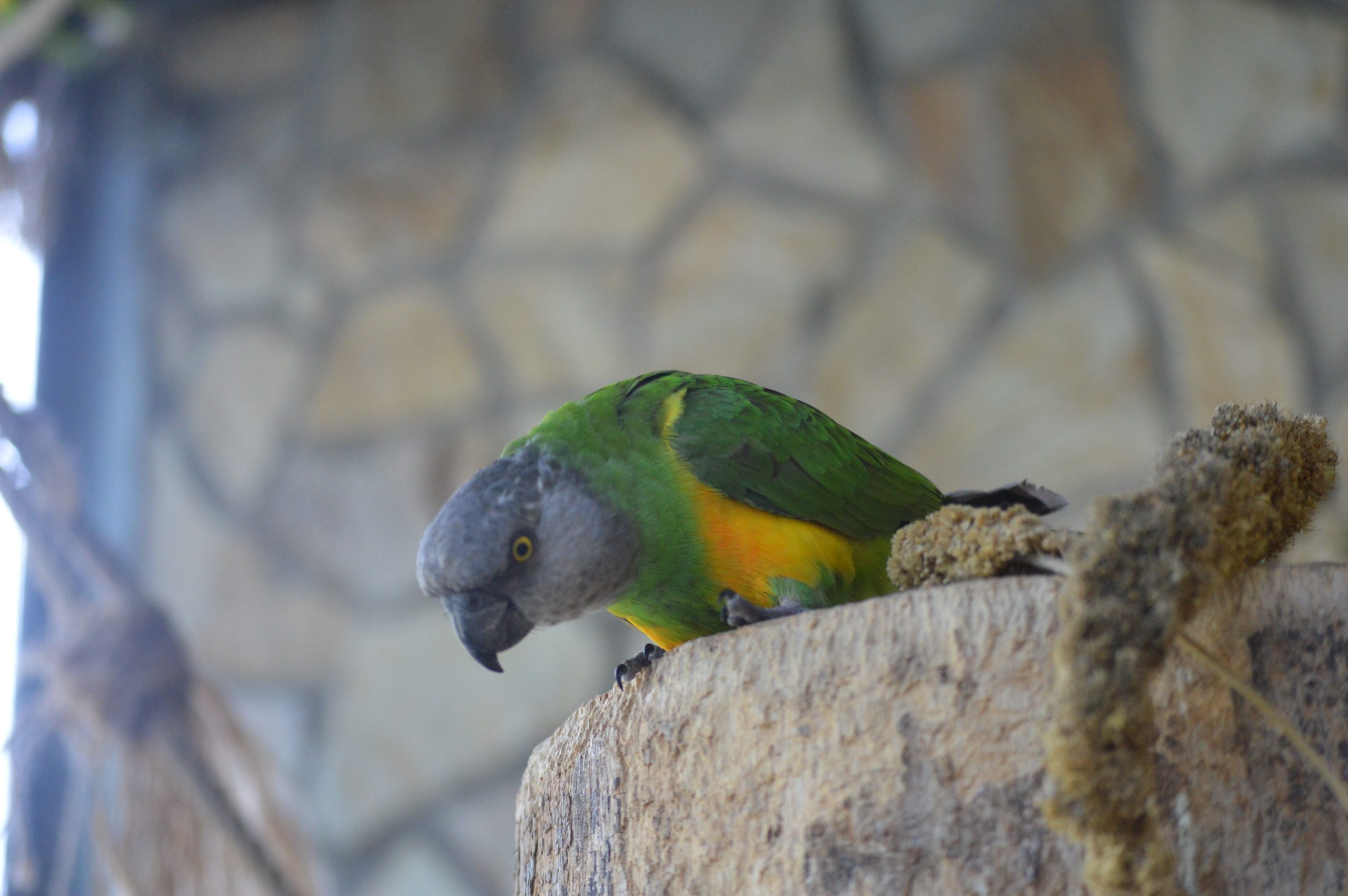It has a black head, green back and throat, and yellow belly and tailbone. The green feathers on the chest enter the yellow feathers in the typical “V” shape. Both beak and legs are grey. The irises are orange.
The male is usually larger and heavier than the female. The female has a smaller head and narrower beak, and the green feathers extending into the yellow V-shaped plumage in front of her body extend all the way between her legs and do not end in the middle of her chest as they do in males.
It inhabits savannah grasslands and open forests. It lives in pairs or small flocks of up to 20 individuals. It is very inconspicuous in the wild and difficult to spot in green treetops.
It nests in the cavities of trees, especially baobabs, high above the ground. The female sits on the eggs. The male brings her, and later the chicks, food and protects the nest from intruders. The female usually stays in the nest until the chicks are 4 weeks old, when the chicks have enough feathers for thermal insulation. The chicks fly out at about 9 weeks of age.
Despite its small stature, it has the character traits of large parrots. It is curious, likes to climb, and easily clings to humans (sometimes it becomes too dependent). It can imitate both sounds and speech. In breeding, it tends to be territorial and defends the territory of its cage or aviary.
They like to make noise, but they are not as noisy as other parrots.
Senegal parrots that have been caught in the wild usually do not become tame and do not make good pets.










